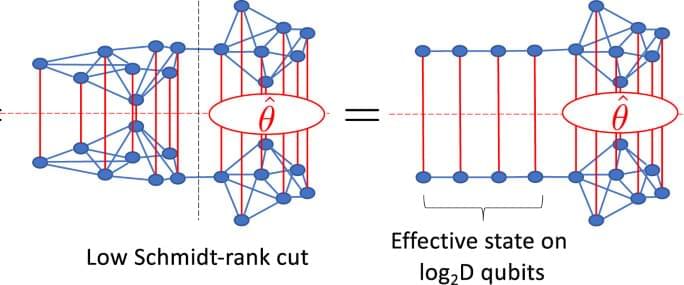Tiny capsule that delivers CRISPR gene therapy to the brain could be used to target glioblastoma tumours.



GE is ready to rock the world of onshore wind turbines with 3D printing for a new concrete base.
Vast swaths of the US have yet to be tapped for wind energy, partly on account of politics and partly because wind speeds in those areas are less than optimal. Only the voting public can take care of the political end. Meanwhile, engineers and innovators are hammering away at the wind speed issue, which can be solved by building taller wind turbine towers. That’s not as easy as it sounds, but GE Renewable Energy is banking on 3D printing to overcome the obstacles.
Why Not Taller Wind Turbines?
Taller wind turbines have several advantages over their shorter cousins. They can reach heights where winds are stronger, without interference from trees, topography, or buildings. The greater height also allows for longer blades, which means a single turbine can harvest more energy. The cost efficiencies can also pile up for taller, longer wind turbines, at least on paper.

Musk’s latest compensation windfall, which must be certified by Tesla’s board, comes days after he offered to buy Twitter for $43 billion, with analysts suggesting he could sell Tesla shares to help finance the deal.
Musk already is the world’s richest person, according to Forbes.
Tesla reported quarterly revenue of $18.76 billion and so-called adjusted earnings before interest, taxes, depreciation and amortization (EBITDA) of $5.02 billion. Combined with the previous three quarters’ results, that surpasses milestones that trigger the vesting of the ninth through 11th of 12 tranches of options granted to Musk in his 2018 pay package.

Circa 2020
Facebook has shown off a new proof-of-concept virtual reality headset, and it has a completely different design than most other VR devices on the market today. Instead of a bulky contraption that covers up the top half of your face and has to be strapped to your head, this proof-of-concept headset looks kind of like a pair of large sunglasses that can sit comfortably on your ears.
Yet Facebook is billing this new device as not a pair of augmented reality glasses, as common conceptions of AR devices go, but a legitimate VR product. They’re very thin, with a display thickness of less than 9mm, and Facebook claims they have a field of view that’s “comparable to today’s consumer VR products.” Here’s a top-down view:
The proof-of-concept glasses aren’t just thin for looks, though — they also apparently beam images to your eyes in a way that’s different than standard VR headsets on the market today. I’ll let Facebook’s research team explain one of those techniques, called “holographic optics:”
UK researchers have developed a small, flexible, snake-like “magnetic tentacle robot” to navigate deep into the lungs.

Circa 2021 Synthetic silicon dna storage.
In research, the demand for DNA strands often outpaces supply. To help supply keep up, researchers may set aside traditional molecular cloning techniques and embrace polymerase chain reaction select PCR)-based techniques. Alternatively, researchers may perform gene synthesis, or the de novo chemical synthesis of DNA. Besides accelerating the creation of genetic sequences, gene synthesis avoids the need for template strands and simplifies procedures such as codon optimization and the fabrication of mutant sequences.
Although gene synthesis can be performed in house, many laboratories prefer to focus on their core competencies and outsource their gene synthesis projects to service providers, especially if sequences of over 1,000 base pairs are desired. Outsourcing also allows laboratories to take advantage of service providers’ economies of scale and quick turnaround times. Finally, service providers offer ease of use. Clients can go online, upload the desired sequences, choose the vector, get the price, and place the order. The entire process takes only a few minutes, and the genes can be delivered a few days later.
Researchers needing a few genes have a choice of several providers. But what if researchers need 10,000 genes? “We’re probably the only game in town,” suggests Emily Leproust, PhD, co-founder and CEO of Twist Bioscience.

Basically all this says is that a basic quantum computer made of a simulation of an infinite quantum computer. So essentially infinite quantum computers could make the internet much more instant.
To parallelise our simulation on a small NISQ machine, we first identify partitions of the system where the effect of one partition upon the other can be summarised by a small amount of information. This is achieved by making Schmidt decompositions across the cut: \(\left|\psi \right\rangle =\mathopsum
olimits_alpha = 1Dlambda ^alpha \left|phi _L^alpha \right\rangle \left|phi _R^alpha \right\rangle,\) where \(\left|phi _L^alpha \right\rangle\) are an orthonormal set of states to the left of the cut and \(\left|phi _R^alpha \right\rangle\) the same on the right. The λα are known as the Schmidt coefficients and D the Schmidt rank or bond order. Retaining λα only above some threshold value provides a way to compress representations of a quantum state; the MPS construction can be obtained by applying this procedure sequentially along a spin chain4.
If an observation is made on the right-hand-side of such a cut, the effect of the quantum state on the left upon the observation can be summarised by just D variables corresponding to the Schmidt coefficients. This same effect can be achieved by an effective state on a spin chain of length \(log\,_2D\) —see Fig. 1 —which can be parametrised on the quantum circuit by an SU (D2) unitary VL. This encodes both the Schmidt coefficients λα and the orthonormal states \(\left|phi _L^alpha \right\rangle\). The latter does not contribute to observables on the right and so in principle, VL can be parametrised by just D variational parameters. The precise numerical values must be determined by solving a quantum mechanical problem on the left of the system. Similarly, for observations made to the left of the cut, the effect of the right-hand side can be summarised by a unitary VR.

This could lead to a truly random number generator making things much more secure.
Random numbers are crucial for computing, but our current algorithms aren’t truly random. Researchers at Brown University have now found a way to tap into the fluctuations of quasiparticles to generate millions of truly random numbers per second.
Random number generators are key parts of computer software, but technically they don’t quite live up to their name. Algorithms that generate these numbers are still deterministic, meaning that anyone with enough information about how it works could potentially find patterns and predict the numbers produced. These pseudo-random numbers suffice for low stakes uses like gaming, but for scientific simulations or cybersecurity, truly random numbers are important.
In recent years scientists have turned to the strange world of quantum physics for true randomization, using photons to generate strings of random ones and zeroes or tapping into the quantum vibrations of diamond. And for the new study, the Brown scientists tried something similar.

Circa 2019
Light is the most energy-efficient way of moving information. Yet, light shows one big limitation: it is difficult to store. As a matter of fact, data centers rely primarily on magnetic hard drives. However, in these hard drives, information is transferred at an energy cost that is nowadays exploding. Researchers of the Institute of Photonic Integration of the Eindhoven University of Technology (TU/e) have developed a ‘hybrid technology’ which shows the advantages of both light and magnetic hard drives.
Ultra-short (femtosecond) light pulses allows data to be directly written in a magnetic memory in a fast and highly energy-efficient way. Moreover, as soon as the information is written (and stored), it moves forward leaving space to empty memory domains to be filled in with new data. This research, published in Nature Communications, promises to revolutionize the process of data storage in future photonic integrated circuits.
Data are stored in hard drives in the form of ‘bits’, tiny magnetic domains with a North and a South pole. The direction of these poles (‘magnetization’), determines whether the bits contain a digital 0 or a 1. Writing the data is achieved by ‘switching’ the direction of the magnetization of the associated bits.

Circa 2015 This is basically amazing leading to speeds in a computer basically infinite.
Quantum gases of atoms and exciton-polaritons are nowadays a well established theoretical and experimental tool for fundamental studies of quantum many-body physics and suggest promising applications to quantum computing. Given their technological complexity, it is of paramount interest to devise other systems where such quantum many-body physics can be investigated at a lesser technological expense. Here we examine a relatively well-known system of laser light propagating through thermo-optical defocusing media: based on a hydrodynamical description of light as a quantum fluid of interacting photons, we investigate such systems as a valid, room temperature alternative to atomic or exciton-polariton condensates for studies of many-body physics.